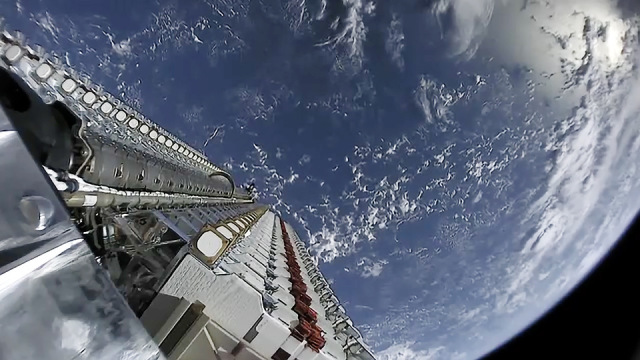Washington. January 19. INTERFAX - The Falcon 9 heavy launch vehicle successfully launched a batch of 49 mini-satellites into orbit on Wednesday, Moscow time, designed to continue the deployment of the global Internet coverage of the Starlink system, the developer company SpaceX reported.
"The withdrawal of 49 Starlink satellites has been confirmed," the report says.
The launch was carried out on Wednesday at 05:02 Moscow time (Tuesday at 21:02 US East Coast time) from Launch Complex 39A at the Cape Canaveral Cosmodrome in Florida.
The SpaceX orbital grouping now consists of 2,040 spacecraft weighing 290 kg each. Currently, the company is the largest satellite operator in the world.
Approximately 15.5 minutes after launch, 49 satellites separated from the second stage of the rocket in an elliptical transition orbit up to 340 km high. After the SpaceX engineers have checked their operability, the satellites using their own ion engines will rise to a standard orbit with a height of 540 km.
This was the 36th launch of a group of Internet satellites into orbit since May 2019 as part of the Starlink project.
The reusable first stage of the American Falcon 9 launch vehicle, which was used for launches for the 10th time, approximately nine minutes after launch made a controlled vertical landing on a floating platform-A Shortfall of Gravitas drone, which was located in the Atlantic 654 km from the cosmodrome.
In addition, special SpaceX rescue vessels had to fish out of the water two wings of the fairing of the rocket head, which after separation descended by parachutes. The reuse of the fairing allows SpaceX to save up to $6 million when launching its rockets.

